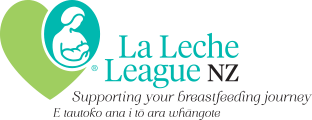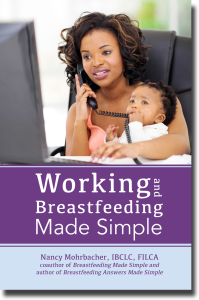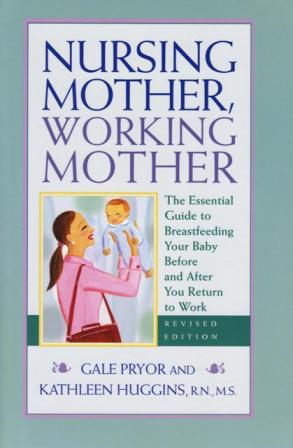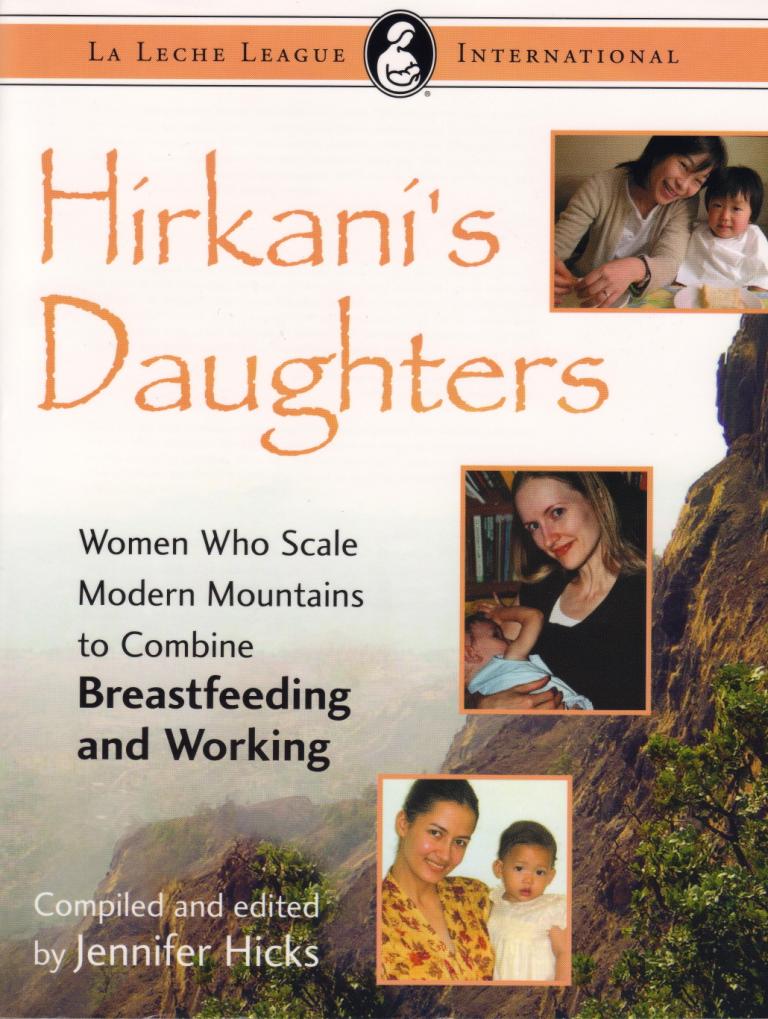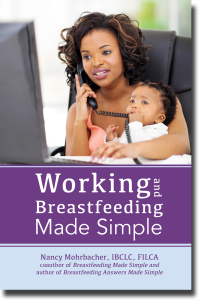Working and Breastfeeding Made Simple
Working and Breastfeeding Made Simple
Nancy Mohrbacher is a star author amongst group library contributors in La Leche League.
This latest book continues her excellent work that started back in 2003 with her coauthorship
of The Breastfeeding Answer Book, which was designed to help mothers
breastfeed their babies.Whether the purpose of her books is to help others assist
breastfeeding women or they are directed towards mothers’ own self-help efforts (as this
new offering is), her style is always simple and direct in a way that is easily understood by
most readers.
The author commences with basic information on just why breastfeeding is so important
and why it’s worth the effort required to keep breastfeeding once you have returned to
work. She continues with a back to work overview dependent on the baby’s age and offers
specific suggestions on how to proceed at each stage. How to deal with employers is
covered and of course no book on this subject would be complete without comprehensive
information on pumps and pumping, milk supply, storage and handling, bottle use and
information to share with baby’s carer. The emotional issues involved in leaving your baby
with others are discussed as well as how the situation may change as your baby grows.
This is an easy to read book, chapters are set out in a clear fashion and it is not full of jargon.
There are few illustrations but the ones present are appropriate. There is an adequate
index, current references, a list of resources ranging from websites, books, smart phone
apps, videos and mother-to-mother support organisations. As is usual with an overseas
published book not all of the resources are useful to an NZ audience, but there is enough
there to provide a start for local mothers.
The table of contents is intelligently organised to allow browsing as needed; this is not a
book that has to be read from cover to cover to gain its full value. Appendices include
sample plans for different work schedules, milk storage guidelines and information for the
caregiver.
This book is highly recommended as suitable for LLLNZ group libraries and will make
valuable contribution for any women who are wanting or needing to return to paid
employment while still breastfeeding their babies. This book should also be read by partners
and support people so that they can understand the importance of their role in helping with
the maintenance of the breastfeeding relationship.
Original review, printed in Aroha Volume 16 Number 6
Working and Breastfeeding Made Simple
Nancy Mohrbacher
Praeclarus Press, USA, 2014
Reviewed by Averil Sheehan and Robin Jones
